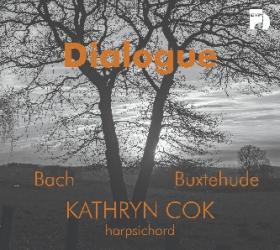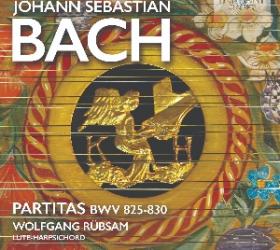
Harpsichordists in the news
What with the recent multi-million-dollar endowment of the Juilliard School’s early music program, New York City steadily increases its profile as an emerging major center for historically informed performance. And that has meant an unusually high New York Times profile for our favorite instrument. In case some of our readers have not noticed several recent news or review items of special interest to harpsichordists, here are a few favorite citings encountered during the first months of the year.
In the edition of Tuesday, April 3, 2012 (page C7), critic Vivian Schweitzer’s cogent review of Mahan Esfahani’s Sunday afternoon recital at the Frick Collection was illustrated with a dramatic chiaroscuro photograph of the artist about to take his seat at the spotlighted harpsichord. Schweitzer began with a reference to Wanda Landowska, who gave her last public recital on the Frick’s stage in 1954, and then mentioned Esfahani’s currently unique place among today’s solo performers as the first harpsichordist to be appointed a New Generation Artist by the BBC. Mahan’s wide-ranging program included music by William Byrd, Scarlatti, Bach’s “English” Suite in G Minor, and Mel Powell’s rarely heard Recitative and Toccata Percossa (composed in 1951 for Fernando Valenti). Schweitzer particularly lauded Esfahani’s choice of encores: the Gavotte and Variations in A Minor by Rameau and William Croft’s Ground in C Minor. Iranian-born Esfahani studied harpsichord with Elaine Thornburgh at California’s Stanford University and with Peter Watchorn in Boston.
In an opera review (Friday March 2, 2012, page C3) the Times’ chief music critic Anthony Tommasini praised a sensational production of George Frideric Handel’s Rinaldo at the Lyric Opera of Chicago. The following sentence certainly captured my attention: “At Armida’s word a huge harpsichord descends from above: literally her instrument of enchantment . . .” [For a picture of this faux instrument, see the June 2012 issue of Opera News, page 44.]
Later, in the concluding paragraph of his four-column critique, Tommasini wrote:
As Armida, the bright-voiced, fearless soprano Elza van den Heever stole every scene she was in, especially the end of Act II, in which the thwarted Armida sings a fiery aria of defiance, “Vo’ far guerra.” The music has a virtuosic harpsichord part, played brilliantly by Jory Vinikour. Onstage a dancer pretends to play the gargantuan harpsichord. The real battle is between [the soprano], who sends chilling phrases flying, and Mr. Vinikour, in the pit. He wins. A diva put in her place by a harpsichordist! Chalk one up for the period-instrument movement.
Hooray and hearty congratulations Jory! At last here is a review truly worth quoting in future publicity releases!
While in Chicago the busy Mr. Vinikour also participated in performances of another rarely heard baroque opera, La Descente d’Orphée aux Enfers (Orpheus’s Descent into the Underworld) by Marc-Antoine Charpentier. Chicago Tribune classical music critic John von Rhein wrote that the Haymarket Opera’s “able, nine-piece ensemble of violins, recorders, viols and theorbo included the expert contributions of harpsichordist Jory Vinikour, moonlighting from his Rinaldo duties over at the Lyric.” [February 25, 2012]
North of Chicago, at the University of Wisconsin-Parkside, the centerpiece among the new Regional Arts Center spaces for the Music Department is the Frances Bedford Concert Hall, named in honor of the well-known Professor Emerita and author. A naming ceremony and gala reception took place as part of the two sold-out December performances of Handel’s Messiah. On these occasions Bedford played harpsichord continuo, as she has done since 1993 for each of the triennial presentations of this beloved work. Also participating in the orchestra were three additional family members: oboists Monte Bedford and Leslie Outland Michelic, and Matt Michelic, viola.
One of the more memorable declarations from centuries of comments about musical instruments comes from Giovanni Maria Trabaci, who wrote in the Preface to Book II of his pieces “per ogni strumenti, ma ispecialmente per i Cimbali e gli Organi” (1615): “the harpsichord is the lord of all instruments in the world, and on it everything may be played with ease.” [“il Cimbalo è Signor di tutti l’istromenti del mondo, et in lei si possono sonare ogni cosa con facilità.”] While I am not always convinced about the “ease” involved, it does seem quite evident that, despite an ever-increasing overabundance of baroque music played on the piano, the lordly harpsichord continues to garner the attention of writers on music as it provides tonal sustenance and aural enjoyment to its own special audience.




